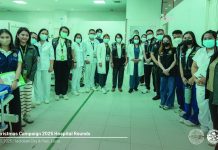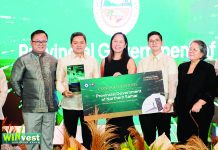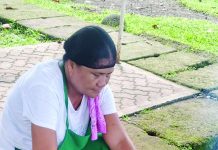Higher compared to 2021 record
TACLOBAN CITY – The Philippine Statistics Authority (PSA) on Tuesday, April 15, reported that poverty incidence among families in the region was recorded at 20.3 percent, indicating that a significant portion of the population had incomes insufficient to meet their basic food and non-food needs.
The 2023 poverty incidence is higher compared to the 22.2 percent recorded in 2021.
The PSA also revealed that the region’s average monthly poverty threshold—the minimum income required to sustain a family’s basic needs—rose to P13,492 in 2023, marking a 20.6 percent increase from P11,187 in 2021.
This reflects the escalating financial challenges many families in the region are facing due to the rising living costs of commodities.
Among the provinces, Samar had the highest poverty incidence with 24.9 percent or around 48,860 families considered poor, followed by Eastern Samar at 24.7 percent or 33,590 families, and Northern Samar at 21.8 percent, representing 31,530 families.
Leyte, excluding Tacloban City, recorded a poverty rate of 21.7 percent or about 110,090 families.
However, significant progress was observed in Biliran and Southern Leyte, where poverty rates dropped significantly between 2021 and 2023.
Biliran’s poverty incidence fell from 19.9 percent in 2021 to 8.5 percent in 2023 or about 3,820 families, while Southern Leyte saw a decline from 16.0 percent to 7.1 percent, or about 6,940 families.
Meanwhile, in Tacloban City, the region’s only highly urbanized city (HUC), the poverty incidence was recorded at 10.6 percent in 2023. This represents about 6, 180 families.
The PSA attributed these poverty trends to various economic factors, including inflation and increasing living expenses, which have widened the gap between the region’s poor and non-poor populations.
Meantime, during a visit to Northern Samar on Monday, October 14, PSA National Chief Usec. Claire Dennis Mapa praised the province’s efforts in reducing poverty.
Mapa commended Governor Edwin Ongchuan for spearheading initiatives that contributed to a “remarkable reduction” in the province’s poverty incidence, which stands at 21.8 percent—the lowest among the three Samar provinces.
Gov. Ongchuan’s administration has implemented a series of anti-poverty programs, which include investments in infrastructure and local economies with support from national programs such as Payapa at Masaganang Pamayanan (PAMANA) and the Philippine Rural Development Project (PRDP).
These efforts have stimulated job creation, enhanced food security, and fostered sustainable development in the province.
Additionally, Ongchuan’s government has worked closely with the National Task Force to End Local Communist Armed Conflict (NTF-ELCAC), addressing insurgency-related issues in remote areas.
This collaboration has helped improve peace and order, enabling better access to government services and economic opportunities for the people of Northern Samar.
(JOEY A. GABIETA)



